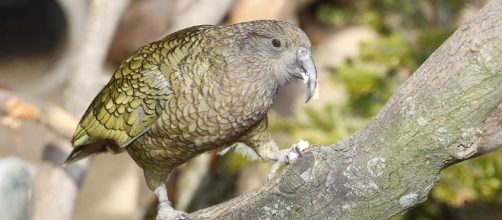There is a lot we still do not understand about the complex sphere of animal psychology. We tend to praise animal intelligence by seeing some of our own behavior in their actions, but there are several species that have shown that they are more than capable of displaying complex behavioral patterns of their own. Certain Octopus mothers are known to starve themselves to death in order to protect their unborn, while Orcas are sometimes seen toying with a baby seal in order to teach their family about dexterity and hunting. As we uncover these hidden layers beneath the natural world, we gain a greater understanding of our own world.
A great example of this would be to observe the playful calls of the Kea, one that scientists now believe makes other Kea’s act “friskily."
Call to party
The Kea’s have always been thought of as a playful and inquisitive birds capable of displaying a vast amount of intelligence. This amazing species is currently battling extinction, even as we continue to understand new facets about its ability to communicate. A team of researchers led by Raoul Schwing from the Messerli Research Institute, Austria, spent some time with Kea’s in Arthur’s Pass National Park in order to understand one specific call.
It has now been understood that the Kea’s use this call to entice other Kea’s around them to play and frolic.
As soon as Kea’s in the area heard this call, both males and females would start playing with birds next to them, or simply play with a nearby object. Scientists have compared this behavior to “infectious laughter” seen in human beings, where one person sets off a chain reaction of rolling laughter. The Kea’s are equally excited in their own way, and end up responding in phenomenal fashion when they hear this specific call.
More to nature than we understand
Fewer than a thousand Kea’s are now known to be found in the wild, and Tamsin Orr-Walker, co-founder of the Kea Conservation Trust believes that something needs to be done immediately.
He had this to say about the gentle and playful birds: “Although it is important not to anthropomorphize animal behavior, it is very clear to anyone working or living with Kea that they are intelligent, social, and take pleasure in playing with each other—much like we see in other cognizant species, including ourselves." (National Geographic).
Instead of getting closer to our fellow living beings and drawing inspiration from their unique traits, we are setting our sights on economic development and rampaging through our ecosystem. Kea’s are the first known birds to display contagious emotions, a trait that was exclusive only to rats, chimps, and humans until now.

